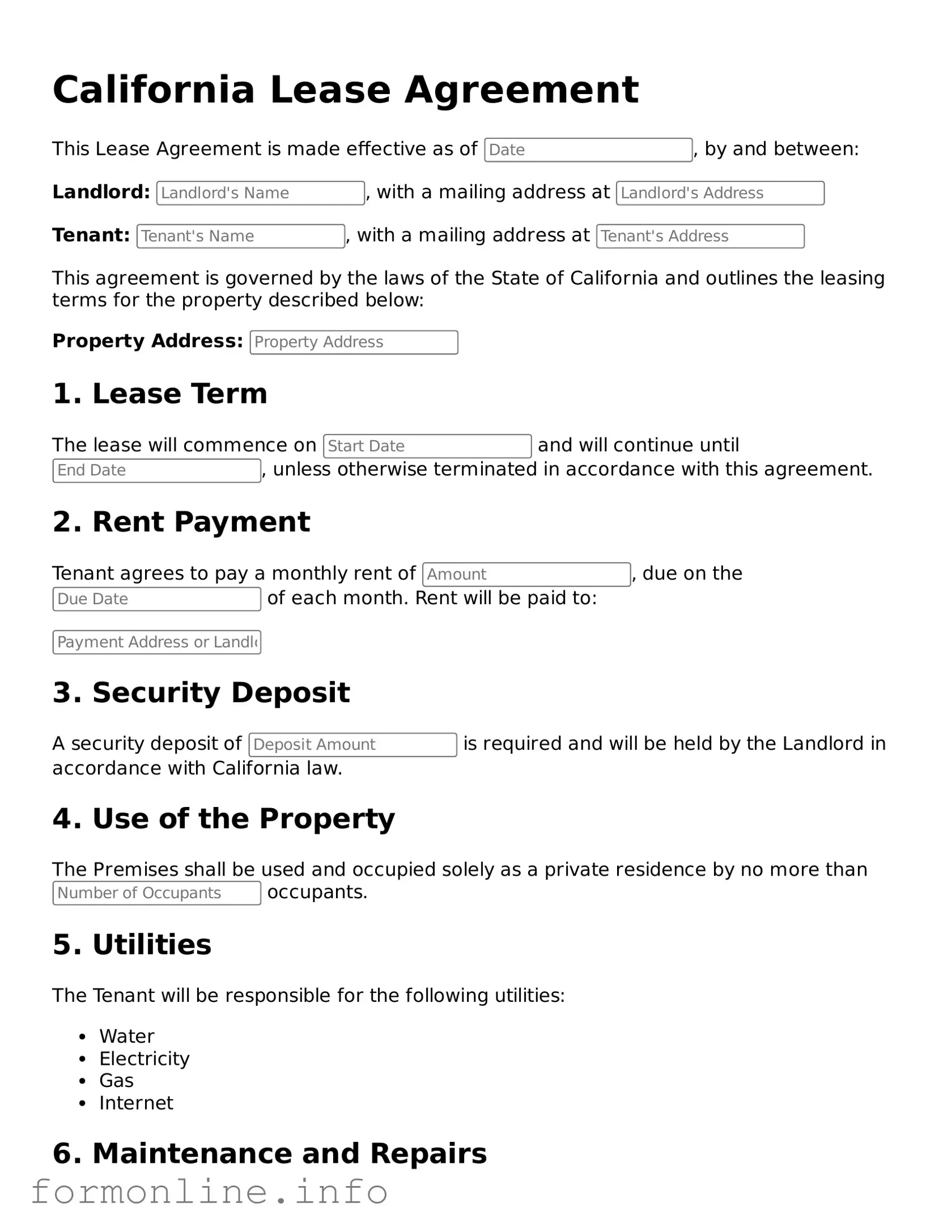Free Lease Agreement Template for California State
The California Lease Agreement form is a legal document that outlines the terms and conditions between a landlord and a tenant for renting residential or commercial property in California. This agreement serves to protect the rights of both parties while ensuring a clear understanding of their responsibilities. To get started, fill out the form by clicking the button below.
Prepare Form Online
